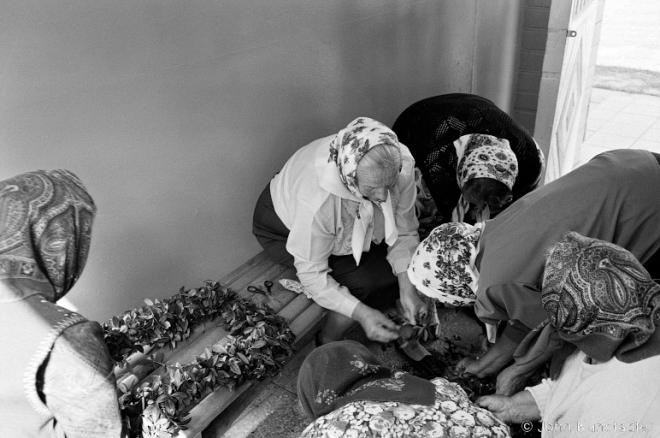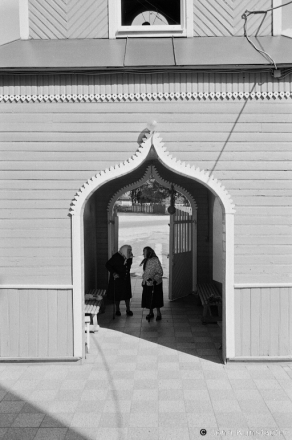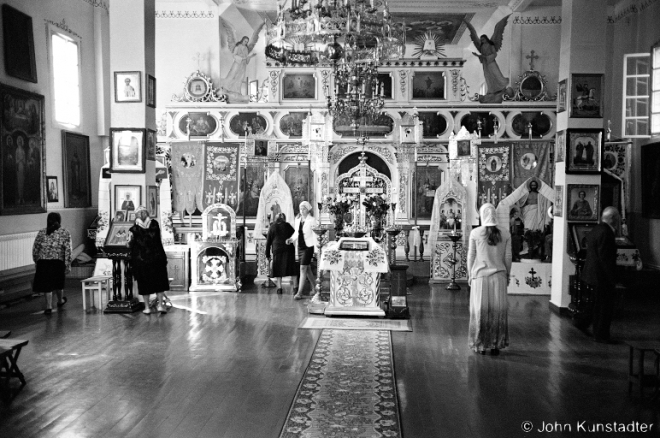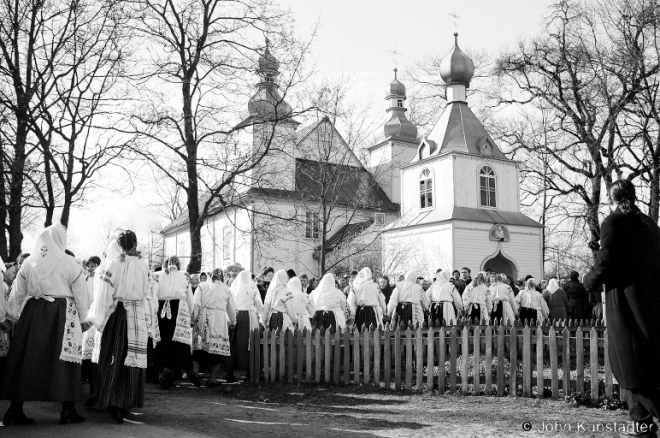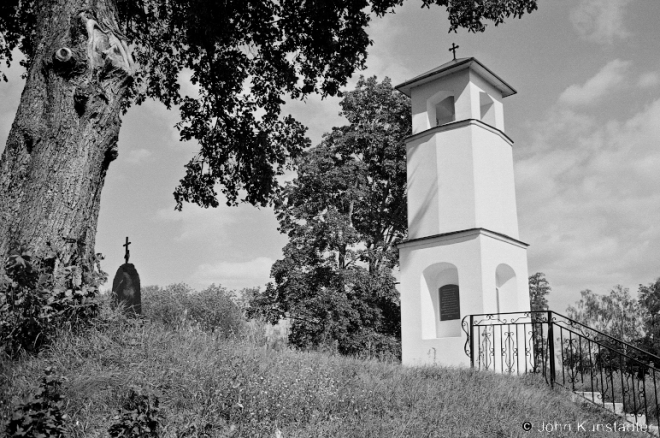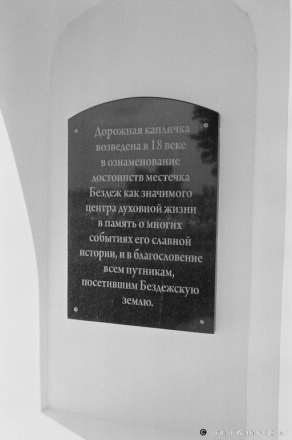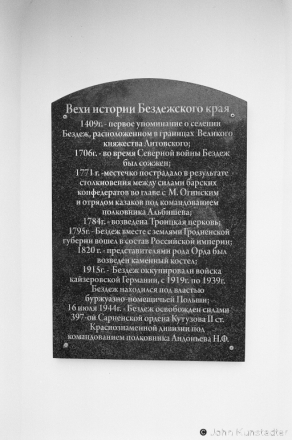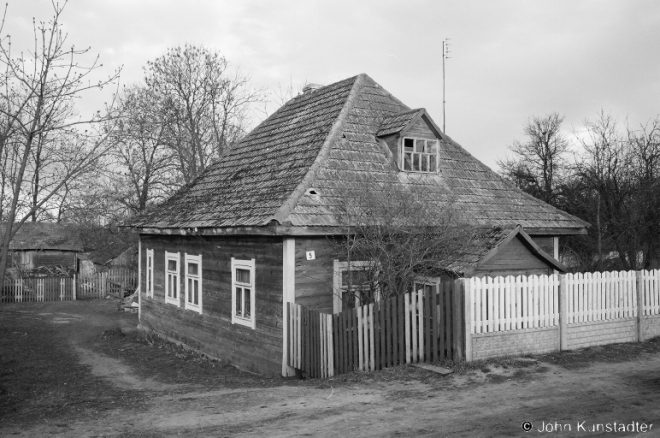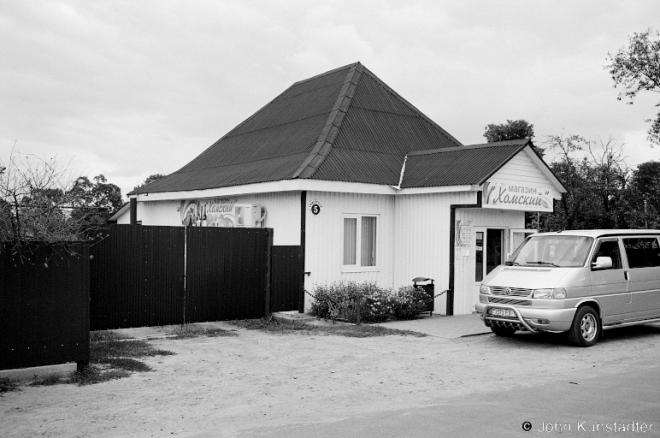Polesian roads: from the Sporava Marsh Preserve to Pinsk 2016, part II/V: Bjezdzjezh.
The Polesian village of Bjezdzjezh in Drahichyn District of western Belarus is known for its Easter-day fair on the village square, where the 1784 wooden Orthodox church of the Holy Trinity stands. Bjezdzjezh is also well-known for its tradition of hand-embroidered aprons and apron museum. One hopes the museum will not only decide to display more of its large collection of aprons than the meager selection now shown but also involve as docents the women who have kept the apron tradition alive.
Палескія дарогі: са Спораўскага заказніку ў Пінск 2016 г., частка II/V: Бездзеж.
Бездзеж вядомы сваёй драўлянай царквой (1784 г.), мураваным касьцёлам (1820 г.) і калонай у гонар Канстытуцыі 3 траўня 1791 г., таксама сваёй традыцыю вышытых фартушкоў і музэям фартушкоў. Спадзяёмся, што музэй вырашыць не толькі выстаўляць больш экспанатаў з яго калекцыі фартушкоў, а таксама запрасіць бабуляк-майстрых па вышываньні служыць экскурсаводкамі.
Passing through the gate in the church tower, I found several grannies concentrating intently on weaving an oak wreath for the next day’s Orthodox feast of the Maccabees (Honey-Blessing feast, August 14).
Прыхаджанкі засяроджана й спрытна плялі вянок напярэдадні сьвята Макавея.
Church gate under the bell-tower.
Брама пад званіцай.
Church interior and iconostasis.
Сьвятыня й іканастас.
Churches of Belarus (part CLXXXIV): Orthodox church of the Holy Trinity. As one can see in this photo from Easter 2007, the church had kept its traditional, harmonious cupolas.
Цэрквы Беларусі (частка CLXXXIV): царква Сьвятой Тройцы з гарманічнымі традыцыйнымі бунькамі й шацёрамі ў фотаздымку з 2007 г.
Several years ago the parish substituted glitzy, alien shapes for the original cupolas.
Некалькі гадоў таму прыход замяніў арыгінальныя бунькі-шацёры цыбулінамі ў блыскуча-чужым стылю.
On the western outskirts of Bjezdzjezh stands a commemorative column. The column was probably erected in honor of the Polish Commonwealth’s remarkable constitution of May 3, 1791, although the architectural patrimony site Globus.by posits that the column might commemorate the 1771 victory near Bjezdzjezh of Bar Confederation forces under Polish Commonwealth grand hetman Mikhail Kazimjer Ahinski over a Russian imperial detachment. This photo from 2007 shows the column in its neglected but evocative state.
Калона ў гонар Канстытуцыі 3 траўня 1791 г. (паводле сайту Globus.by, можна гэта не калона, а каплічка ў гонар перамогі Барскай канфедэрацыі пад вялікім гетманам Міхаілам Казімерам Агінскім над расійскім імперскім атрадам у бітве пад Бездзежам ў 1771 г.: http://globus.tut.by/bezdezh/index.htm). Фотаздымак калоны з 2007 г. паказвае яго тагачасны занядбаны, але выразны стан.
The 2013 “restoration” of the column stripped it of its historical character and turned it into a roadside shrine.
“Аднаўленьне“ калоны ў 2013 г. знішчыла яе гістарычны характар і перамяніла яе ў прыдарожную каплічку.
The texts on two sides of the column — written in 2013 in Russian, not Belarusian — express a tendentious and obscurantist view of history. The first text reads “This roadside shrine was erected in the 18th century to express the virtue of the town of Bjezdzjezh as a notable center of spiritual life in the memory of the many events of its glorious history, and as a blessing to all travelers visiting the Bjezdzjezh area.” The second text includes these neo-Soviet passages: “1771 – the town suffered as a result of a clash between forces of the Bar Confederation under M. Ahinski and a detachment of Cossacks under the command of Colonel Al’bishev” and “from 1919 until 1939 Bjezdzjezh found itself under the regime of the bourgeois landowner class of Poland”.
Шылды нібіта з 50-ых гадоў мінулага стагодзьдзя.
A well-preserved pre-World War II wooden house as it looked in 2007…
Даваенная хата ў добрым стане ў 2007 г….
…and as it looks today, having been covered with siding and turned into a store.
…і сёньня як адрамантаваны сайдынгам магазін “Хомский“.

